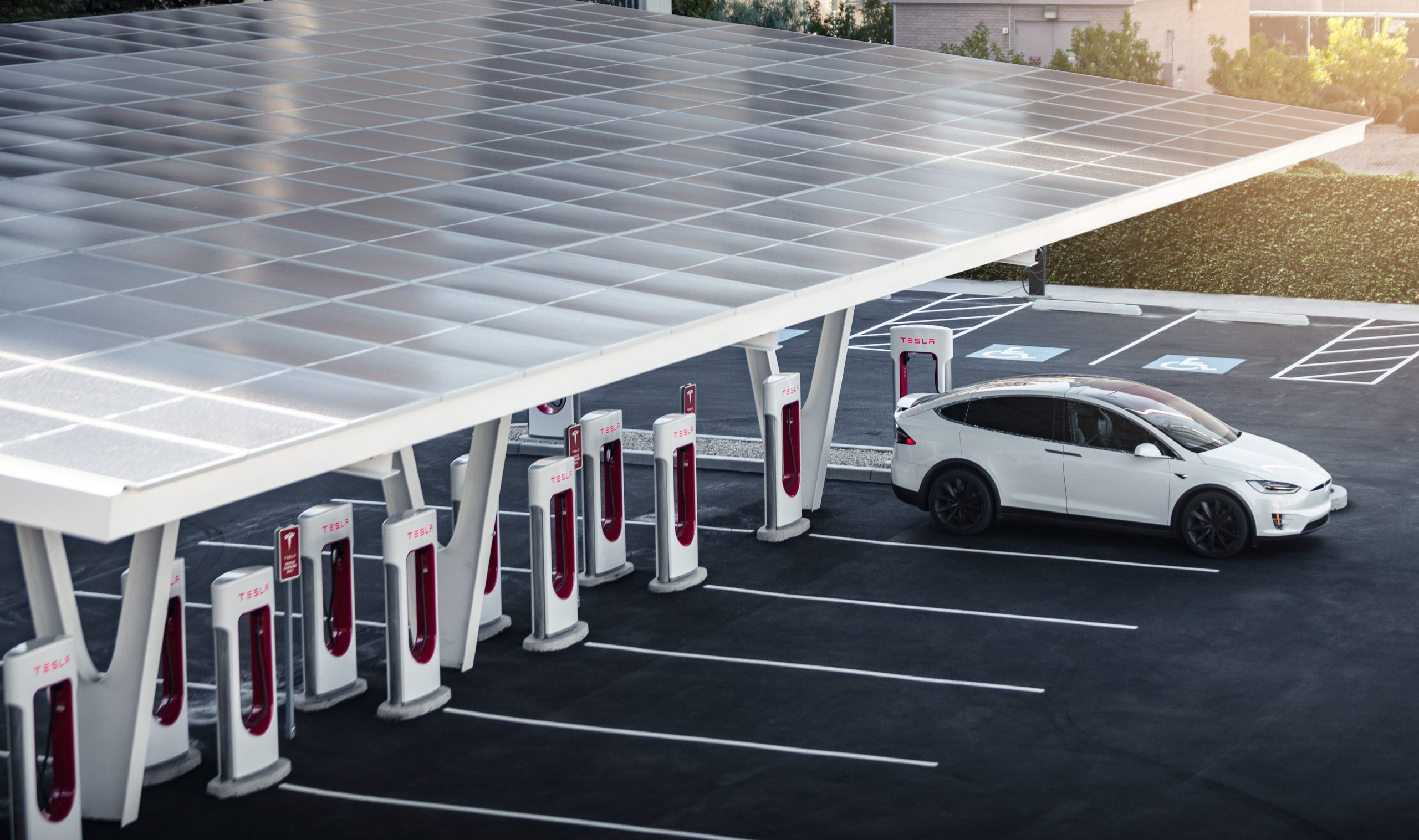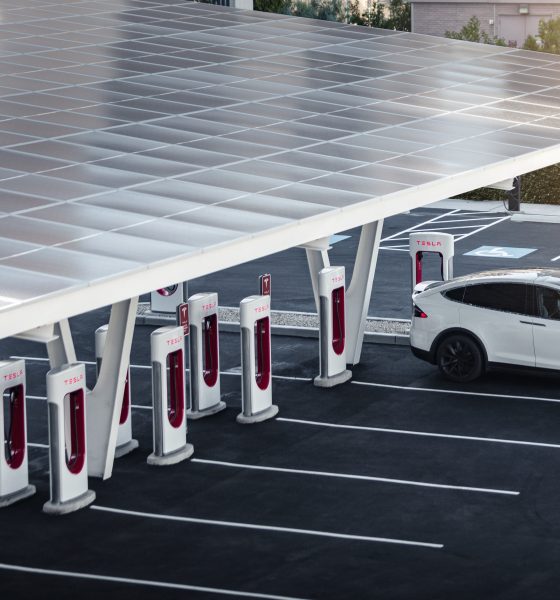The U.S. Departments of Transportation and Energy have announced $325 million in new investments going toward improving electric vehicle (EV) charger reliability and cutting costs in the industry.
In a press release shared on Friday, the White House announced three programs to repair and replace existing, non-operational chargers across the country, to reduce costs for deploying charging in underserved communities, and to cut battery costs. Part of the funding includes almost $149 million in grants dedicated to fixing non-working charging equipment, expected to help bring 4,500 broken public chargers back into operation.
The White House says the programs will “increase the reliability and resilience of publicly accessible chargers, advance EV technologies, and support workforce development for EV charging deployment and maintenance.”
The statement also details the Biden administration’s notice of intent to propose regulations related to the 30C tax credit, recommending definition changes that would give around two-thirds of Americans access to up to 30 percent off on charging equipment.
EV charger reliability has long been under scrutiny from EV drivers and regulators alike, and especially from those who have had to charge their vehicles at non-Tesla charging stations. Last year, the California Energy Commission announced plans to create regulatory framework for public EV charger reliability and availability, though this is the first such funding to support maintenance on a federal level.
The newly announced funding programs also follow $623 million in awards announced earlier this month, which are expected to help fill gaps in the U.S. charging infrastructure.
The press release includes a list of financial commitments that are a part of the programs, including Tesla’s plan to open at least 7,500 Superchargers to non-Tesla owners throughout this year. Throughout much of last year and into this year, nearly every automaker also signed on to adopt Tesla’s charging hardware, dubbed the North American Charging Standard (NACS).
The list also includes several other automakers and a new charging station joint venture including BMW, General Motors (GM), Honda, Hyundai, Kia, Mercedes-Benz and Stellantis, which is expected to install 30,000 EV charging stations.
It also lists several companies that are not automakers as a part of the program, including the Hilton deal for as many as 20,000 Universal Wall Connectors, announced in September.
Below are all the companies listed on the private sector EV charging commitments document, or you can view full project descriptions from the White House here.
EV Charging Deployment
Automakers
- JV created by BMW, GM, Honda, Hyundai, Kia, Mercedes-Benz and Stellantis
- Tesla
- Forum Mobility
Charging Companies
- bp pulse (EV charging arm of bp, formerly British Petroleum)
- EVgo
- Francis Energy
Notable Charging Partnerships
- Pilot, GM and EVgo
- TravelCenters of America and Electrify America
- Mercedes-Benz, ChargePoint and MN8 Energy
- GM and FLO
- Forum Mobility and local San Pedro and Oakland ports
- EVgo and Meijer
Hospitality/Retail
- Marriott
- Hilton
- Walmart
EV Charger Manufacturing
- Kempower Inc.
- EdgeEnergy
- BorgWarner
- Daimler Truck North America, NextEra Energy and BlackRock Alternatives
- Ingeteam
- Atom Power
- XCharge North America
- Star Charge
- LG Electronics
What are your thoughts? Let me know at zach@teslarati.com, find me on X at @zacharyvisconti, or send your tips to us at tips@teslarati.com.

News
Tesla starts showing how FSD will change lives in Europe
Local officials tested the system on narrow country roads and were impressed by FSD’s smooth, human-like driving, with some calling the service a game-changer for everyday life in areas that are far from urban centers.

Tesla has launched Europe’s first public shuttle service using Full Self-Driving (Supervised) in the rural Eifelkreis Bitburg-Prüm region of Germany, demonstrating how the technology can restore independence and mobility for people who struggle with limited transport options.
Local officials tested the system on narrow country roads and were impressed by FSD’s smooth, human-like driving, with some calling the service a game-changer for everyday life in areas that are far from urban centers.
Officials see real impact on rural residents
Arzfeld Mayor Johannes Kuhl and District Administrator Andreas Kruppert personally tested the Tesla shuttle service. This allowed them to see just how well FSD navigated winding lanes and rural roads confidently. Kruppert said, “Autonomous driving sounds like science fiction to many, but we simply see here that it works totally well in rural regions too.” Kuhl, for his part, also noted that FSD “feels like a very experienced driver.”
The pilot complements the area’s “Citizen Bus” program, which provides on-demand rides for elderly residents who can no longer drive themselves. Tesla Europe shared a video of a demonstration of the service, highlighting how FSD gives people their freedom back, even in places where public transport is not as prevalent.
What the Ministry for Economic Affairs and Transport says
Rhineland-Palatinate’s Minister Daniela Schmitt supported the project, praising the collaboration that made this “first of its kind in Europe” possible. As per the ministry, the rural rollout for the service shows FSD’s potential beyond major cities, and it delivers tangible benefits like grocery runs, doctor visits, and social connections for isolated residents.
“Reliable and flexible mobility is especially vital in rural areas. With the launch of a shuttle service using self-driving vehicles (FSD supervised) by Tesla in the Eifelkreis Bitburg-Prüm, an innovative pilot project is now getting underway that complements local community bus services. It is the first project of its kind in Europe.
“The result is a real gain for rural mobility: greater accessibility, more flexibility and tangible benefits for everyday life. A strong signal for innovation, cooperation and future-oriented mobility beyond urban centers,” the ministry wrote in a LinkedIn post.
News
Tesla China quietly posts Robotaxi-related job listing
Tesla China is currently seeking a Low Voltage Electrical Engineer to work on circuit board design for the company’s autonomous vehicles.

Tesla has posted a new job listing in Shanghai explicitly tied to its Robotaxi program, fueling speculation that the company is preparing to launch its dedicated autonomous ride-hailing service in China.
As noted in the listing, Tesla China is currently seeking a Low Voltage Electrical Engineer to work on circuit board design for the company’s autonomous vehicles.
Robotaxi-specific role
The listing, which was shared on social media platform X by industry watcher @tslaming, suggested that Tesla China is looking to fill the role urgently. The job listing itself specifically mentions that the person hired for the role will be working on the Low Voltage Hardware team, which would design the circuit boards that would serve as the nervous system of the Robotaxi.
Key tasks for the role, as indicated in the job listing, include collaboration with PCB layout, firmware, mechanical, program management, and validation teams, among other responsibilities. The role is based in Shanghai.
China Robotaxi launch
China represents a massive potential market for robotaxis, with its dense urban centers and supportive policies in select cities. Tesla has limited permission to roll out FSD in the country, though despite this, its vehicles have been hailed as among the best in the market when it comes to autonomous features. So far, at least, it appears that China supports Tesla’s FSD and Robotaxi rollout.
This was hinted at in November, when Tesla brought the Cybercab to the 8th China International Import Expo (CIIE) in Shanghai, marking the first time that the autonomous two-seater was brought to the Asia-Pacific region. The vehicle, despite not having a release date in China, received a significant amount of interest among the event’s attendees.
Elon Musk
Elon Musk and Tesla AI Director share insights after empty driver seat Robotaxi rides
The executives’ unoccupied tests hint at the rapid progress of Tesla’s unsupervised Robotaxi efforts.

Tesla CEO Elon Musk and AI Director Ashok Elluswamy celebrated Christmas Eve by sharing personal experiences with Robotaxi vehicles that had no safety monitor or occupant in the driver’s seat. Musk described the system’s “perfect driving” around Austin, while Elluswamy posted video from the back seat, calling it “an amazing experience.”
The executives’ unoccupied tests hint at the rapid progress of Tesla’s unsupervised Robotaxi efforts.
Elon and Ashok’s firsthand Robotaxi insights
Prior to Musk and the Tesla AI Director’s posts, sightings of unmanned Teslas navigating public roads were widely shared on social media. One such vehicle was spotted in Austin, Texas, which Elon Musk acknowleged by stating that “Testing is underway with no occupants in the car.”
Based on his Christmas Eve post, Musk seemed to have tested an unmanned Tesla himself. “A Tesla with no safety monitor in the car and me sitting in the passenger seat took me all around Austin on Sunday with perfect driving,” Musk wrote in his post.
Elluswamy responded with a 2-minute video showing himself in the rear of an unmanned Tesla. The video featured the vehicle’s empty front seats, as well as its smooth handling through real-world traffic. He captioned his video with the words, “It’s an amazing experience!”
Towards Unsupervised operations
During an xAI Hackathon earlier this month, Elon Musk mentioned that Tesla owed be removing Safety Monitors from its Robotaxis in Austin in just three weeks. “Unsupervised is pretty much solved at this point. So there will be Tesla Robotaxis operating in Austin with no one in them. Not even anyone in the passenger seat in about three weeks,” he said. Musk echoed similar estimates at the 2025 Annual Shareholder Meeting and the Q3 2025 earnings call.
Considering the insights that were posted Musk and Elluswamy, it does appear that Tesla is working hard towards operating its Robotaxis with no safety monitors. This is quite impressive considering that the service was launched just earlier this year.










